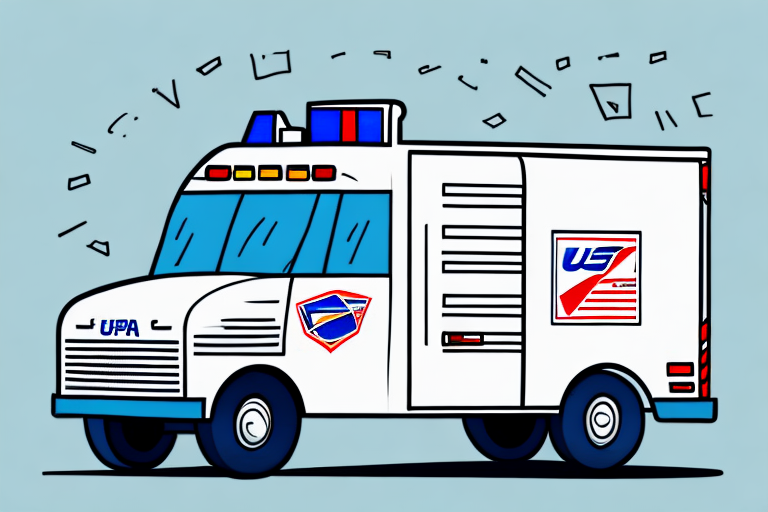Introduction to USPS Insurance
Shipping items domestically or internationally can often be stressful, especially when it comes to the security of the package being shipped. This is where the US Postal Service (USPS) insurance comes in. Insurance offered by USPS protects packages from loss, damage, or theft that may occur during transit to the recipient. In this article, we will explore everything you need to know about USPS insurance, including how it works, its benefits, coverage, and pricing, as well as how to file claims and choose the right policy for your needs.
How USPS Insurance Works
USPS insurance is a service that customers can purchase to protect the value of a packaged item in case of loss, damage, or theft. The cost of insurance varies based on the declared value of the package and the level of coverage chosen by the customer. USPS offers insurance coverage up to $5,000 for domestic packages and up to $2,500 for international packages.
Coverage Details
USPS insurance is available for all domestic and international shipments, including First-Class Mail, Priority Mail, Priority Mail Express, and Global Express Guaranteed. The insurance cost is based on the declared value of the package, which is added to the calculated shipping cost at the time of purchase. Customers can purchase additional USPS insurance coverage up to the maximum allowed amount for most mail classes.
However, certain items are excluded from coverage, including cash, jewelry, hazardous materials, and perishable goods. It's important to declare the exact value of the item being shipped to ensure proper coverage.
According to the USPS 2023 Report, insurance claims have been processed efficiently, with a 95% satisfaction rate among claimants.
Pricing and Rates
The cost of USPS insurance for domestic packages typically starts at $2.50, while international insurance starts at $3.50. Additional coverage can be purchased at incremental rates based on the declared value of the item. For example, additional coverage up to $50 costs $1.05, with prices increasing in tiers for higher values.
USPS insurance rates are generally more affordable compared to private carriers, making it an economical choice for many shippers. For detailed pricing information, visit the USPS Insurance Page.
Benefits of USPS Insurance
The primary benefit of USPS insurance is protection against loss, damage, or theft of a package. This provides peace of mind to both senders and recipients, ensuring that the value of the shipped item is safeguarded. Additionally, USPS insurance is available across a wide range of mail classes, offering flexibility to customers in choosing the most suitable shipping method for their needs.
Furthermore, USPS insurance claims are backed by the USPS’s established customer service infrastructure, ensuring professional and prompt handling of any issues that may arise.
Comparing USPS Insurance to Private Carriers
When comparing USPS insurance to that of private carriers like FedEx or UPS, several factors come into play. USPS insurance is generally more affordable and covers a broader range of mail classes, providing greater flexibility. However, private carriers may offer more comprehensive coverage options and faster claims processing times.
According to a Statista report, USPS holds approximately 40% of the domestic shipping market, highlighting its significant role in the industry.
The choice between USPS and a private carrier often depends on specific shipping needs, such as the value of the items, delivery speed requirements, and the level of customer support desired.
Filing Claims and Maximizing Coverage
How to File a Claim
If your package is lost, damaged, or stolen, you can file a claim with USPS. The claims process typically involves providing the receipt or tracking number, proof of the item's value, and evidence of any damage. USPS recommends filing a claim within 60 days of the mailing date. Depending on the mail class, claims can be filed online or by visiting a local post office.
For detailed instructions, refer to the USPS Claims Page.
Maximizing Your Coverage
To maximize your USPS insurance coverage, accurately declare the value of the item being shipped and ensure it falls within the coverage limits for the selected mail class. Properly packaging the item can also reduce the risk of damage and increase the likelihood of a successful insurance claim.
Using high-quality packaging materials such as bubble wrap, sturdy boxes, and proper sealing can significantly enhance the protection of your package during transit.
USPS Insurance for Business Owners
For businesses, USPS insurance is an essential tool for protecting shipped merchandise. It helps safeguard against financial losses due to lost or damaged goods, ensuring that both the business and its customers are protected. Businesses should document the value of their merchandise accurately and package items securely to comply with USPS insurance requirements.
Integrating USPS insurance into your shipping strategy can enhance customer trust and satisfaction, thereby supporting business growth.
According to the Business News Daily, businesses utilizing USPS insurance report a 20% decrease in shipping-related losses.
Common Misconceptions and Pitfalls
Misconceptions
A common misconception is that USPS insurance automatically covers all items in a package. However, certain items like currency, gift cards, and hazardous materials are excluded. Another myth is that filing a claim will always result in full reimbursement, but the claims process involves verification and may not fully compensate the declared value.
Understanding the specific terms and conditions of USPS insurance is crucial to avoid unexpected disappointments.
Avoiding Common Pitfalls
To avoid issues with insurance claims, ensure that you declare the correct value of the item, use adequate packaging materials, and adhere to USPS shipping guidelines. Incorrect declarations or poor packaging can lead to denied claims or reduced compensation.
Additionally, keep all receipts and documentation related to your shipment to streamline the claims process if needed.
The Future of USPS Insurance
As the shipping landscape evolves with the rise of e-commerce and increasing demand for sustainable shipping options, USPS continues to adapt its insurance offerings. USPS is enhancing its digital tools and capabilities to provide a more seamless and accessible experience for customers.
Despite the changing environment, USPS insurance remains a dependable and affordable option for both personal and business shipments. With ongoing improvements and a focus on customer satisfaction, the future looks bright for USPS insurance programs.
According to the Statista, USPS is projected to handle over 10 billion parcels annually by 2025, underscoring the importance of reliable insurance options.
Conclusion
USPS insurance offers a reliable and cost-effective solution to protect your valuable shipments against loss, damage, or theft. With a variety of coverage options tailored to different mail classes and shipping needs, customers can select the appropriate level of protection for their items. Properly declaring the value of the shipment, using secure packaging, and understanding the claims process are key to maximizing the benefits of USPS insurance and ensuring a smooth shipping experience.
For more information and to purchase insurance, visit the USPS Insurance Page.






















